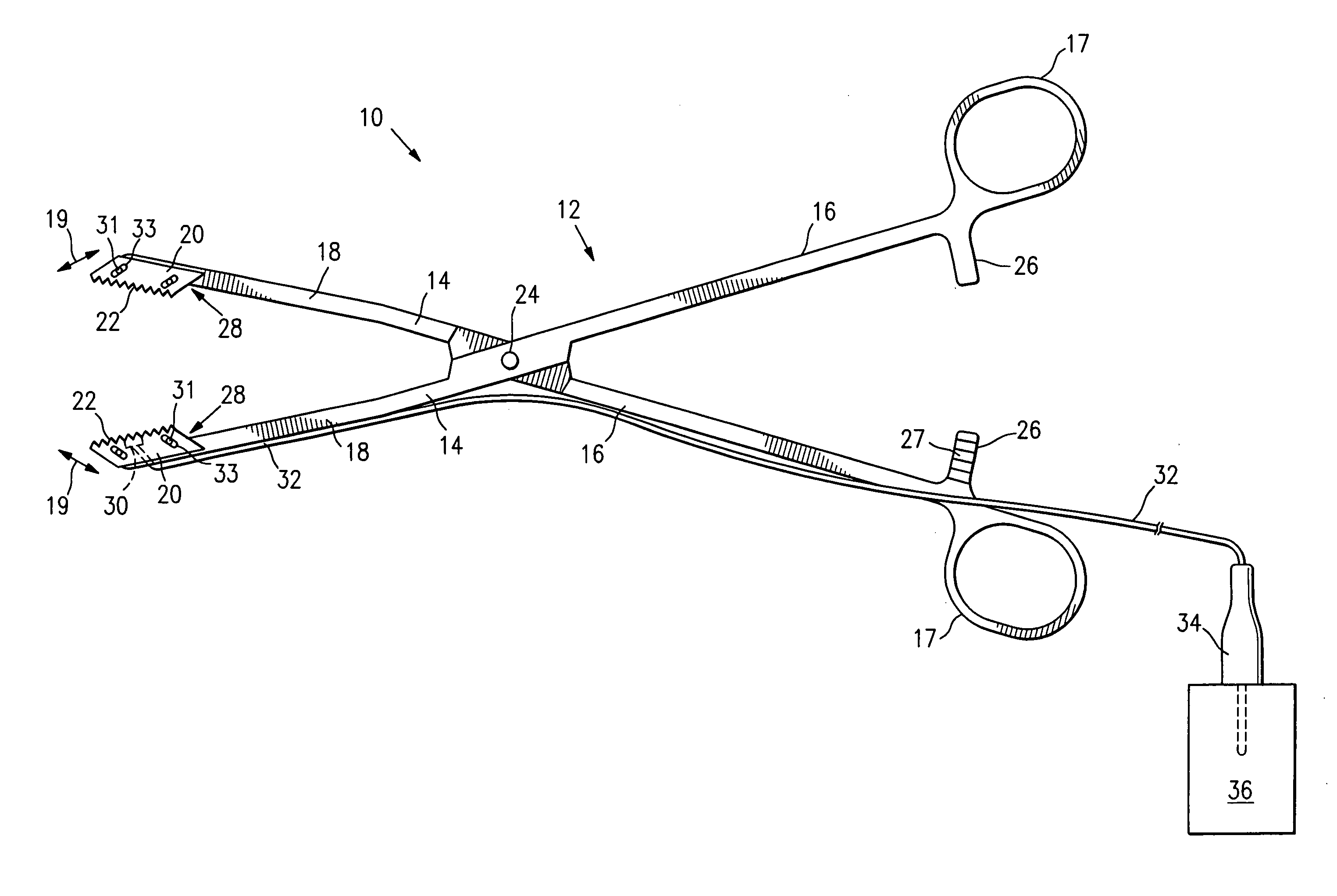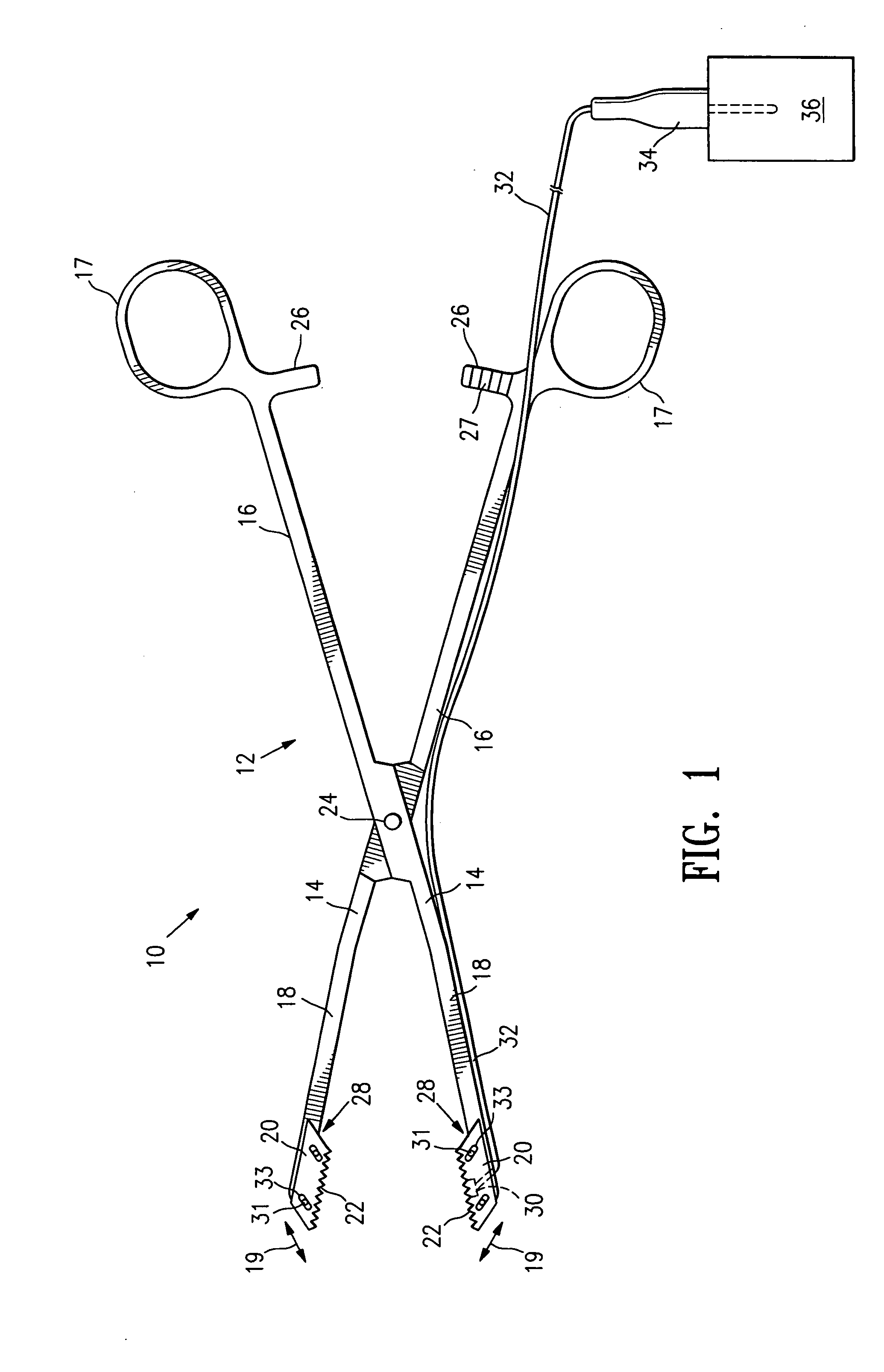Vascular clamp for caesarian section
a technology of caesarian section and vascular clamp, which is applied in the field of treatment of diseases and conditions, can solve the problems of significant blood loss, serious threat to the life and health of the mother, and significant blood loss of a significant fraction of the mother's blood, so as to prevent excessive blood loss, and be convenient for the operator to use.
- Summary
- Abstract
- Description
- Claims
- Application Information
AI Technical Summary
Benefits of technology
Problems solved by technology
Method used
Image
Examples
Embodiment Construction
[0030]FIGS. 1-4 show a uterine artery-occluding system 10 embodying features of the invention which includes a clamping device 12 having clamping members 14, handles 16 with finger grips 17, pressure-applying members 18 and floating jaws 20 on the pressure applying members. Floating jaws 20 have serrated pressure-applying surfaces 22 configured to engage and hold onto tissue when floating jaws 20 are pressed into a patient's body tissue. Clamping members 14 are pivotally interconnected at pivot point 24. Clamping members 14 are preferably formed with the handles 16 integral with the pressure applying members 18. The operator squeezes the finger grips 17 on clamping members 14 to cause pressure-applying surfaces 22 to approach one another as the separation distance between pressure-applying members 18 decreases. Each of the handles 16 are provided with releasable locking mechanism 26 including two complementary ratchet portions 27 configured to engage with each other and to lock clam...
PUM
 Login to View More
Login to View More Abstract
Description
Claims
Application Information
 Login to View More
Login to View More - R&D
- Intellectual Property
- Life Sciences
- Materials
- Tech Scout
- Unparalleled Data Quality
- Higher Quality Content
- 60% Fewer Hallucinations
Browse by: Latest US Patents, China's latest patents, Technical Efficacy Thesaurus, Application Domain, Technology Topic, Popular Technical Reports.
© 2025 PatSnap. All rights reserved.Legal|Privacy policy|Modern Slavery Act Transparency Statement|Sitemap|About US| Contact US: help@patsnap.com



